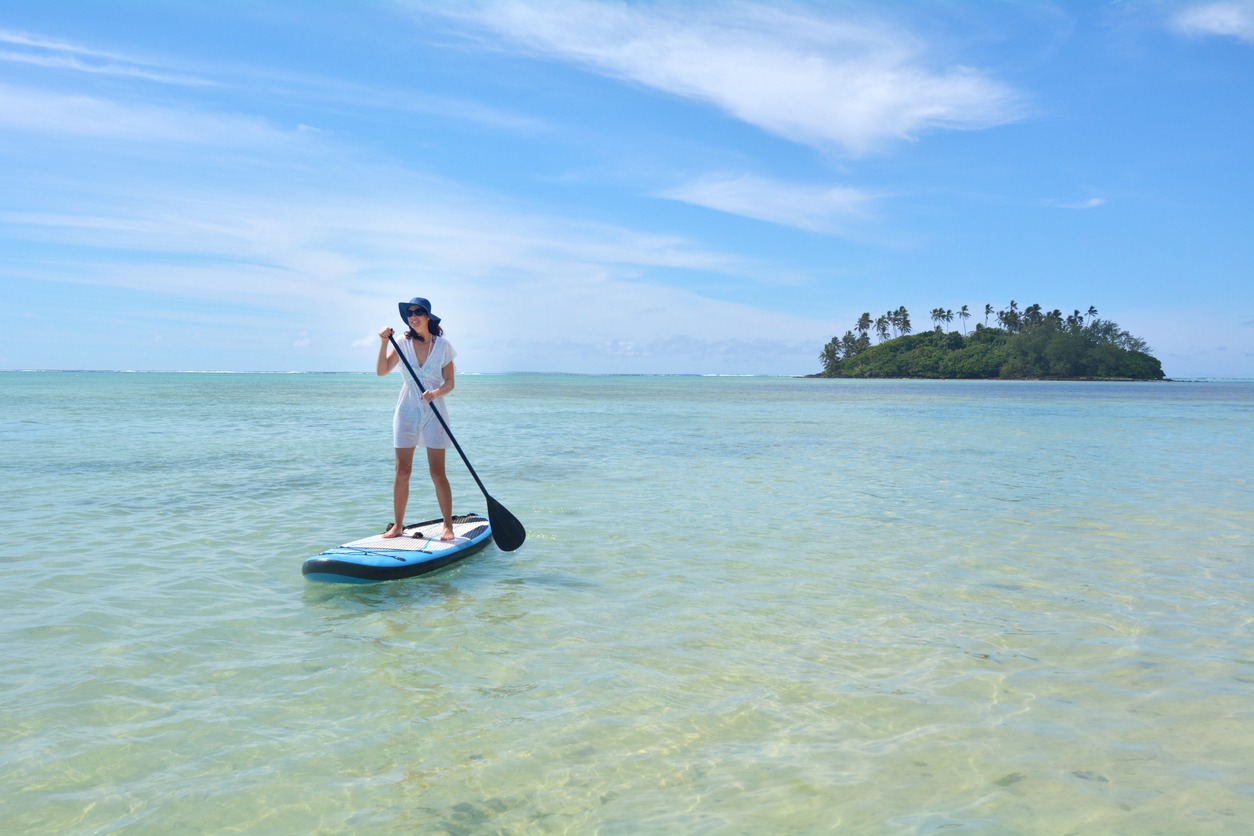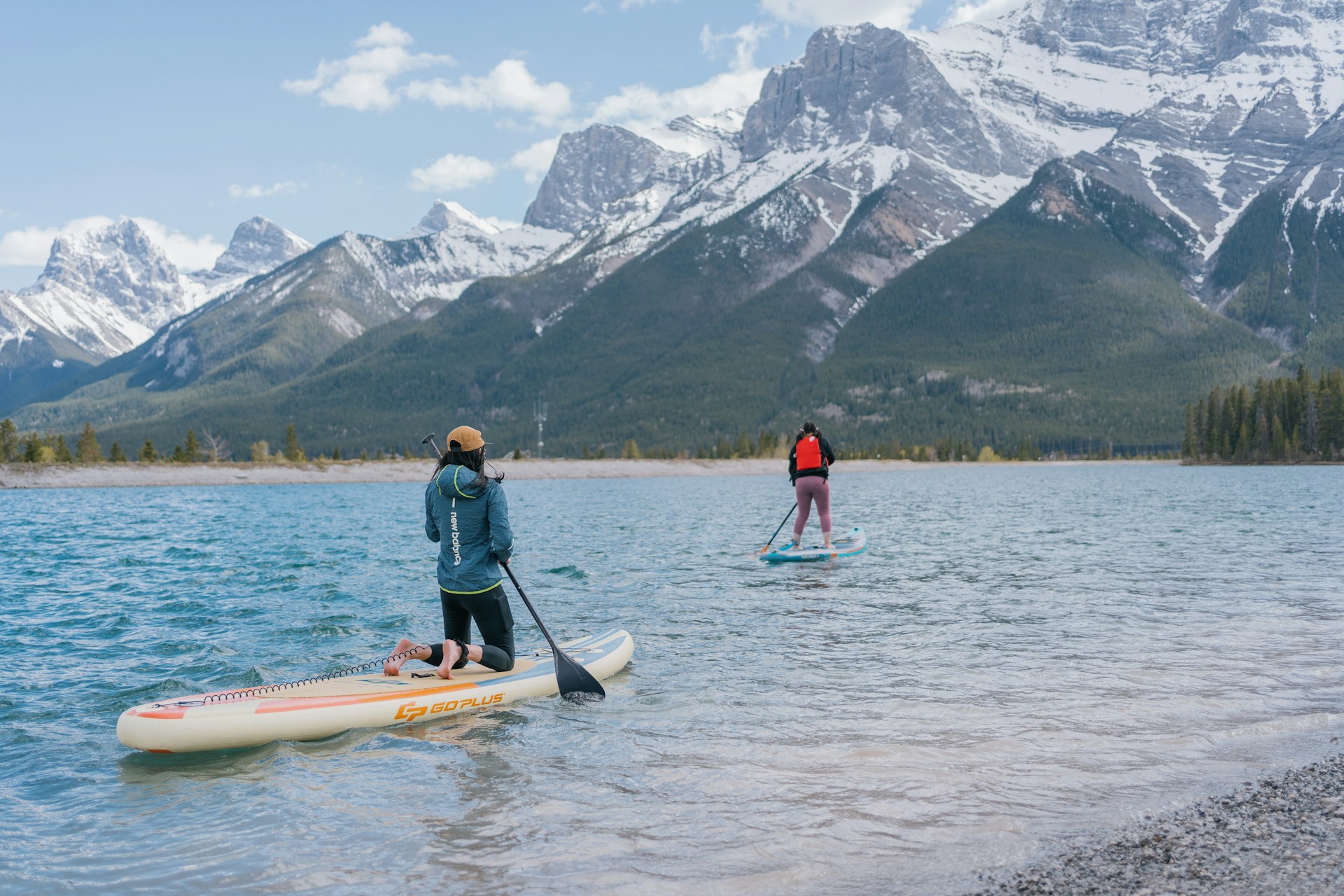Stand Up Paddleboarding Safety Tips for Beginners
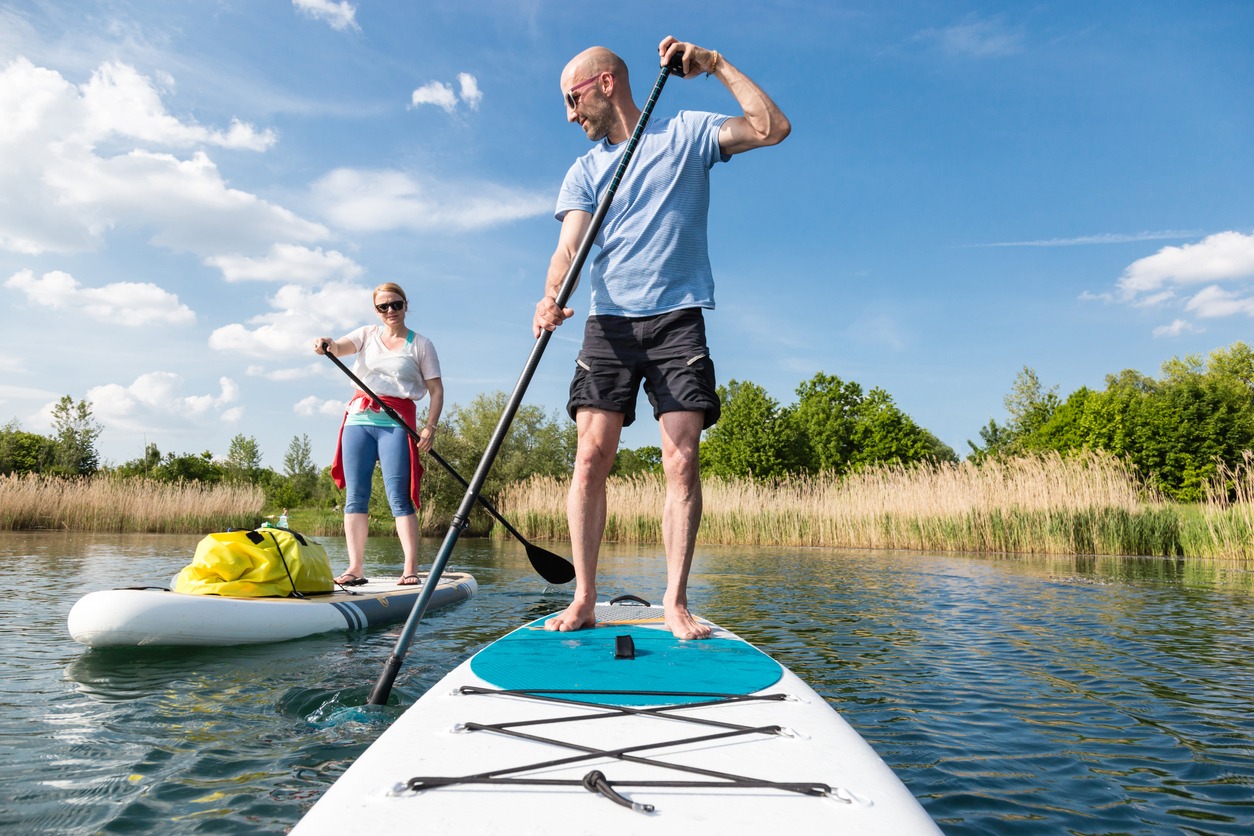
When starting out with stand up paddleboarding, prioritize safety to guarantee an enjoyable experience. Always wear a U.S. Coast Guard-approved PFD and use a leash to stay connected to your board. Check weather conditions and be aware of potential hazards in your paddling area. Learn proper paddling technique and practice falling safely and recovering. Stay close to shore, paddle with a buddy, and carry essential safety gear like a whistle and communication device. Maintain your equipment and familiarize yourself with local regulations. By following these tips, you'll build a strong foundation for your paddleboarding expeditions. Uncover more ways to enhance your safety and skills on the water.
Essential Safety Gear
Every stand-up paddleboarder should prioritize safety by equipping themselves with essential gear. The most pivotal item is a properly fitted U.S. Coast Guard-approved Personal Flotation Device (PFD) or Buoyancy Aid. This life-saving equipment provides critical floatation if you fall into the water, keeping you safe while you regain control of your board and paddle. Recognize that stand-up paddleboarding (SUP) carries inherent risks, so it's important to familiarize yourself with the potential hazards, such as falling overboard, collisions, and exposure to elements.
Attach a coiled ankle leash to your board to prevent it from drifting away if you fall off. This simple device guarantees you'll always have access to your primary floatation device – the paddleboard itself. Don't forget to carry a whistle or other signaling device to alert others if you need help.
Dress appropriately for the water temperature, not just the air temperature. Wear synthetic, moisture-wicking clothing to prevent hypothermia, even on warm days. Always check the weather forecast before heading out.
Lastly, bring a waterproof communication device, such as a VHF radio or personal locator beacon. These tools are priceless when you're out of cell phone range and need to call for assistance. By equipping yourself with these essential safety items, you'll be prepared for a safe and enjoyable paddleboarding experience.
Leash Usage and Importance
A paddleboard leash is your lifeline on the water. It's a crucial safety accessory that connects you to your board, preventing it from drifting away if you fall. When you're paddling, especially in challenging conditions, a leash guarantees you'll always have your board within reach.
Different types of leashes are available to suit various paddling styles and water conditions. Whether you choose a coiled or straight leash, make sure it's properly secured to your ankle or calf for a reliable connection. By wearing a leash, you're not only protecting yourself but also other water users, as it prevents your board from becoming a hazard if you fall off.
To maximize your safety and enjoyment while stand-up paddleboarding:
- Choose the right leash for your paddling style and conditions
- Inspect your leash regularly for wear and tear
- Practice attaching and detaching the leash quickly
- Learn how to use the leash effectively in different situations
Weather and Water Awareness
While a leash keeps you tethered to your board, understanding weather and water conditions is key to staying safe on your paddleboarding expedition. Before setting out, always check the forecast and tide times to guarantee you're facing safe conditions. Mother nature can be unpredictable, so it's vital to know the conditions you'll encounter.
Be particularly cautious of offshore winds, which can quickly blow you out to sea. Even on seemingly calm days, water conditions can change rapidly. To stay informed, observe wind socks at lifeguarded beaches to determine wind direction. This simple step can help you avoid potentially dangerous situations.
When choosing your paddling location, consider the specific hazards of the area. Strong currents, obstacles, or cold water can pose significant risks. If you're a beginner, start with flat water areas and gradually work your way up to more challenging conditions.
Proper Paddling Technique
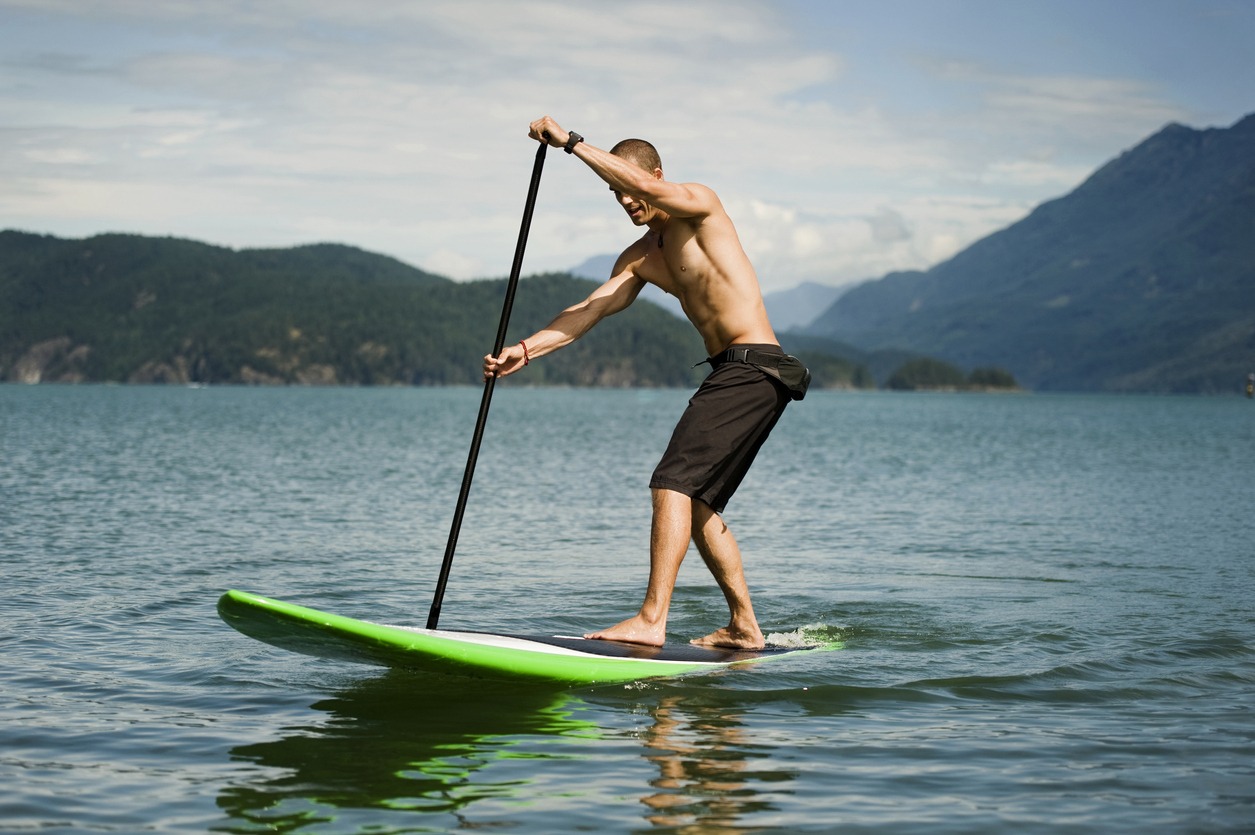
Acquiring proper paddling technique is essential for efficient and safe stand up paddleboarding. As a first-time SUP enthusiast, learning the basics will enhance your experience and heighten your confidence on the water. Start by assuming the correct standing position on your board, with your feet shoulder-width apart and knees slightly bent. This stance provides stability and allows for better balance as you paddle.
When paddling, remember to use your core muscles rather than relying solely on your arms. Engage your torso and rotate from your hips to generate power and maintain proper form. Keep your arms straight and use long, smooth strokes to propel yourself forward efficiently.
To improve your SUP skills and paddle boarding technique, focus on these key points:
- Grip the paddle correctly, with one hand on top and the other about shoulder-width apart
- Keep the paddle blade angled slightly forward when it enters the water
- Pull the paddle back alongside the board, not out to the side
- Alternate sides every few strokes to maintain a straight course
As you gain experience and improve your skill level, you'll find that proper paddling technique becomes second nature, allowing you to enjoy your SUP journeys with greater ease and safety.
Falling and Recovery Strategies
Sooner or later, you'll take an unexpected dip while stand up paddleboarding. It's an inevitable part of the learning process, so it's paramount to be prepared for falling and recovery. When you feel yourself losing balance, try to fall away from your board to avoid injury. As you enter the water, release your paddle and focus on resurfacing safely.
To get back on your board, position yourself at the center and use your core strength to pull yourself up. Practice this technique in calm waters to build confidence. Remember to wear a leash at all times to keep your board nearby if you fall off. In flowing water, a quick release leash can help you detach from the board if necessary.
If you're struggling to climb back on, remain calm and float on your back. Use your arms to paddle towards your board or wait for assistance. Being prepared for self-rescue is essential, so familiarize yourself with various techniques before venturing out. By honing falling and recovery strategies, you'll elevate your confidence and safety on the water, allowing you to fully enjoy your paddleboarding experience.
Navigating Waterways Responsibly
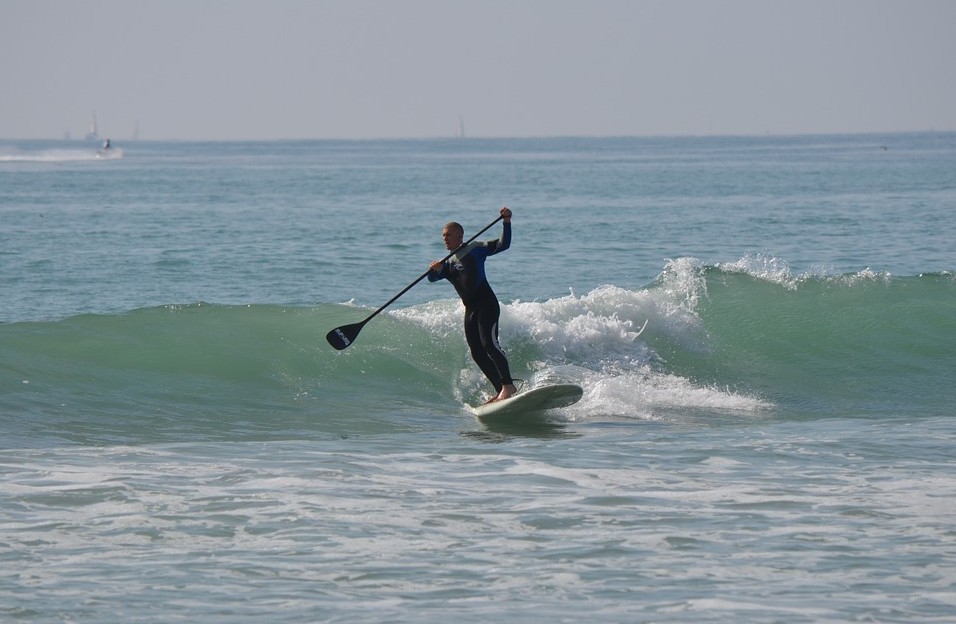
Traversing waterways prudently is essential for your safety and the well-being of others. When you're out on your paddle board, always maintain a safe distance of at least 200 meters from weirs and river mouths to avoid hazardous currents and backflow. Stay close to shore and regularly change direction to prevent drifting too far from the shoreline. This practice helps you sustain contact with land and reduces the risk of getting into trouble in the water.
As you maneuver different bodies of water on your SUP board, be mindful of other water users and potential hazards. Continuously scan your environment for obstacles, changing weather conditions, and moving water. Remember that tidal flows can tremendously impact water movement, especially in estuaries and ocean-opening waterways.
To guarantee responsible direction:
- Paddle with a companion or group for shared safety responsibility
- Stay away from areas with strong currents or unpredictable water movement
- Be aware of local regulations and respect designated areas for water activities
- Always carry appropriate safety equipment, including a life jacket and whistle
Communication and Emergency Preparedness
Staying connected and prepared for emergencies is indispensable when paddleboarding. Before you set out, always inform a reliable contact of your planned route and expected return time. This is especially important if you're paddling alone or in remote areas.
Carry a waterproof communication device, such as a mobile phone with emergency apps, to call for help if needed. It's essential to be familiar with local emergency services contact information, including how to ask for the Coastguard. If you find yourself in trouble, don't hesitate to use your device to call for assistance.
Consult detailed weather and tide forecasts to anticipate changing conditions. This knowledge can help you decide whether to stay close to shore or venture further out. Seek local knowledge about hazards and conditions in the paddling area to better prepare yourself.
Remember to wear a buoyancy aid at all times. If you fall into the water, it'll help you stay afloat while you attempt to paddle back to shore or wait for rescue. An inflatable paddle can provide additional support in emergencies, serving as an extra flotation device if needed.
Equipment Care and Maintenance
While proper safety measures are essential, maintaining your paddleboard equipment is equally important for a safe and enjoyable experience. To guarantee SUP safety and longevity of your gear, you'll need to take proper care of your board, paddle, and accessories. Make sure to inflate your SUP board to the recommended PSI before each use, as this will help keep it stable and performing ideally on the water without compromising its structure. Paddle boarding offers varying levels of intensity from gentle drifts to heart-pounding paddles, so it's important to maintain your equipment accordingly.
After each paddling session, clean your board and paddle thoroughly to remove salt, sand, and debris that can cause premature wear. Store your equipment in a cool, dry place to prevent sun damage and deterioration. Don't forget to regularly inspect your paddle for any signs of damage or wear, replacing it if necessary.
- Regularly service removable parts like fins and attachment points
- Use a dry suit or protective cover when transporting your board
- Apply UV-resistant spray to protect your board from sun damage
- Keep a maintenance log to track inspections and repairs

